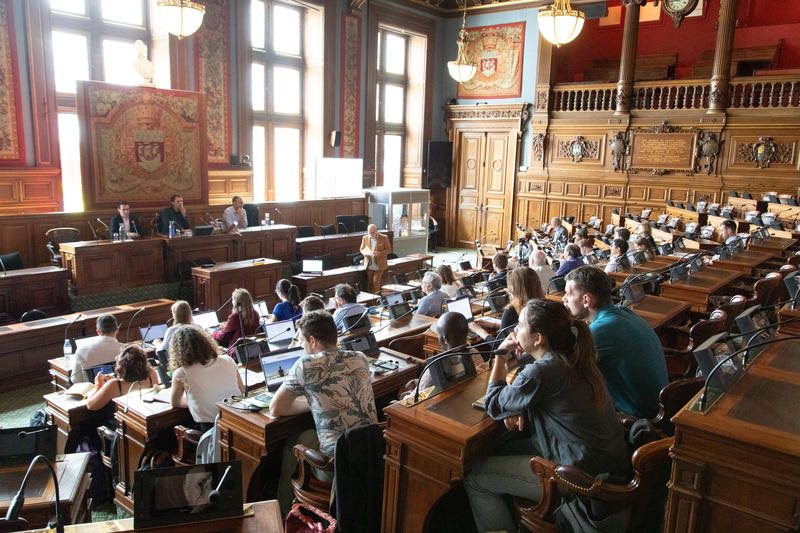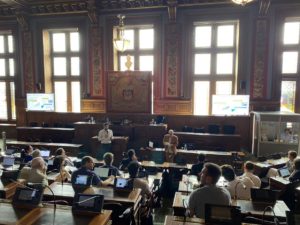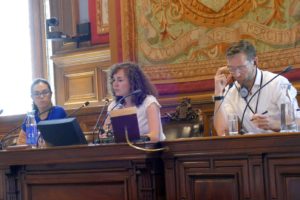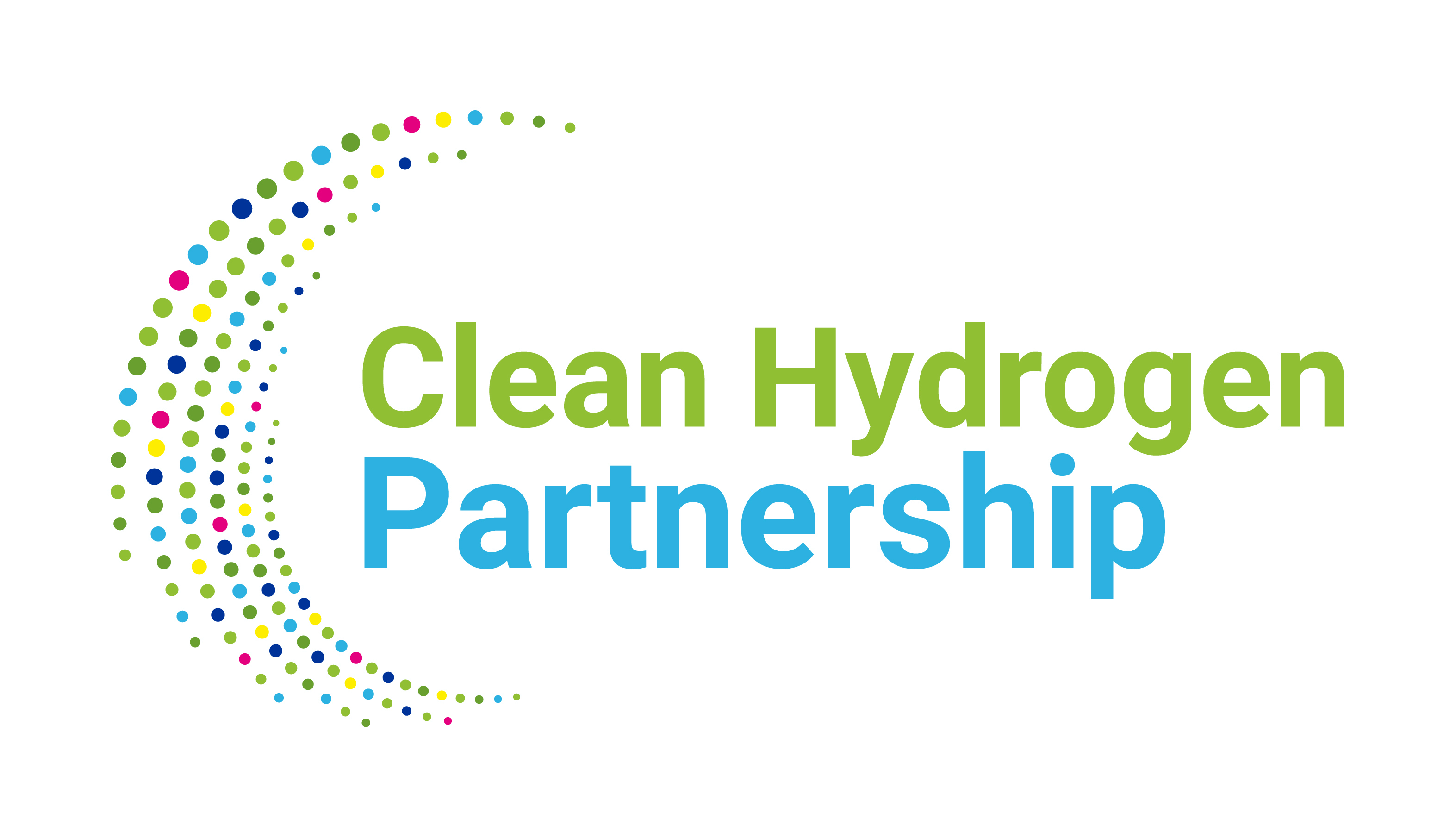
The role of Hydrogen Vehicles in decarbonising cities Highlights of the ZEFER roundtable on hydrogen mobility held in Paris in June 2023
On 22 June, at the closing event of the ZEFER project, key stakeholders of the hydrogen sector gathered in the City Hall of Paris to discuss the role hydrogen mobility can play in decarbonising cities in a roundtable organised by the City of Paris.
The deputy majors of Paris David Belliard and Dan Lert welcomed participants to the roundtable and highlighted the importance of understanding the validity of decarbonisation solutions in the current context. The city of Paris has an ambitious political framework for zero-emission mobility and more generally to accelerate the energy transition. They outlined the city’s objectives, which target two major climate and public health issues: air and noise pollution.
To meet these targets and reduce greenhouse gas emissions by at least 25% by 2030, Paris has set itself some challenging goals, such as halving its energy consumption and switching to a 100% renewable energy supply by 2050.
Moreover, with the development of hydrogen commercial vehicles, the production and use of green hydrogen is becoming an important lever for the decarbonisation of mobility
and thus responding to the challenges mentioned above.
For hydrogen, already partly integrated into our environment, to become a relevant solution across all mobility segments, it will be necessary to demonstrate that the capacity exists to produce green hydrogen at scale in sufficient quantities, and at a convenient price.

David Belliard and Dan Lert, Deputy majors of Paris
Hydrogen mobility initiatives in Europe and in France
Luca Feola, Project Officer of the ZEFER project at the Clean Hydrogen Partnership, presented the possible EU public funding supports available today in Europe. The ZEFER project received funding from the Clean Hydrogen Partnership, one of the existing EU funding institutions acting on research and innovation of hydrogen technologies. Most of the projects funded by the Clean Hydrogen Partnership today are transport related. Historically, the Clean Hydrogen Partnership has supported the development of hydrogen-powered cars due to their maturity, before buses and more recently heavy-duty vehicles.

Luca Feola, Project Officer of the ZEFER project
The ZEFER project, and other projects such as H2ME and H2ME2, funded as part of these programmes were instrumental in the development of the sector in Europe, both increasing the numbers of hydrogen refuelling stations and vehicles on the road in Europe and demonstrating its business case.
Luca Feola explained that, in this new phase of deployment, the financial support will be given in developing the entire ecosystems, so called Hydrogen Valleys, and advancing on research activities rather than demo projects, such as the ZEFER project. These ecosystems will enable the production, storage, distribution and use cases of hydrogen within a region and will demonstrate that, through a positive business case, any region can achieve energy independency through a sustainable hydrogen economy.
Thomas Bertheau, Hydrogen Project Officer at the French Agency for Ecological Transition (ADEME) presented the current initiatives put in place by ADEME, a French agency that manages state funds through various calls for projects to finance the energy transition. With the France 2030 program (previously known as France Relance), more than nine billion euros are available for hydrogen projects, of which several hundred million euros are managed by ADEME. A new call for project was recently launched which will support primarily mobility projects, specifically projects on heavy good fleets, retrofitted vehicles, and related research, but also industrial uses of hydrogen. As Luca Feola, Thomas Bertheau spoke of the importance of deploying ecosystems and infrastructures, with the main objective of producing hydrogen as close as possible to the consumer.
Nicolas Richez, Head of the Energy Unit of the Department of Ecological Transition and Climate (DTEC) of Paris outlined the importance of converting existing petrol stations into hydrogen and electric charging points and coordination work required for planning the deployment of zero emission solutions in the long term. With the reduction in the number of trips and vehicles per inhabitant, many petrol stations in the center of Paris have closed in the last decades. Hydrogen mobility can play a role in decarbonising fleets in Paris such as taxi fleets which remain in large part diesel based today.
Mathieu Gardies, CEO and founder of HYPE, a pioneer in the French hydrogen mobility sector, facilitated the successful deployment and integration of fuel cell electric vehicles (FCEV) fleet in Paris with now more than 300 FCEVs deployed in Paris by HYPE alone. After initially working with full electric vehicles (EV), HYPE concluded they would not meet their operational requirements.
Furthermore, HYPE recently opened new HRS in Issy-les-Moulineaux and Le Mans that are also accessible for other vehicles segments. HYPE has announced the launch of taxi fleets and associated HRS in seven other cities in Europe, in Bordeaux, and abroad, in Brussels, Lisbon, Porto, Madrid and Barcelona. Another eight cities will be announced soon.
HYPE continue to develop their customer offer with the integration of vehicles for persons with reduced mobility in addition to sport utility vehicles, vans, saloons, and light duty cars currently available.
The role of FCEV fleets in cities’ future and their replication potential
Clémence Brodier, Mobility Policy Officer at Hydrogen Europe, presented the European regulatory framework for hydrogen mobility, including the latest changes. To comply to the Green Deal and reduce CO2 emissions significantly in the upcoming year, the primary goal for mobility is a transition to zero-emission vehicles. At this point, Clémence Brodier emphasized that both, EVs and FCEVs, were needed to reach the objectives set by the European Commission.
She presented the C40 initiative, a network of cities committed to transition to zero-emission by 2030, highlighting the potential for replicability for FCEVs in these cities. She also highlighted the manufacturers of cars who are increasingly committed and diversifying their models and thus their offers for customers.

Speakers of the second roundtable: Lisa Ruf, Clémence Brodier and Jonathan Hargreaves
Lisa Ruf, Associate Partner at Element Energy, an ERM Group Company and coordinator of the ZEFER project, presented some of the lessons learned from the project and future plans. The main objective of the ZEFER project was to demonstrate the replicability potential of FCEVs fleets in Paris, London and Copenhagen. The project has demonstrated that the mass integration of FCEVs is feasible and has the support of its users. The main advantages of FCEV were highlighted by drivers as their range and the shorter recharging time compared to EVs. The approaches tested in the project with HRS network of two to five stations can provide a good foundation for initial deployments in new cities. However, attention must be paid to reliability and redundancy, especially as the number of vehicles in operation increases over time.

Deployment of FCEVs in 3 European capitals
Jonathan Hargreaves, Communications Principal at Anglo American, presented “H2 Moves Berlin”, a new partnership between leading platinum producer Anglo American, Toyota Germany and taxi company SafeDriver Group, that is seeking to deploy up to 200 Toyota Mirai taxis on the streets of Germany’s capital. Building upon Berlin’s substantial and growing hydrogen infrastructure, Jonathan Hargreaves described how Uber platform taxi fleets – and their targeted deployment at key public events – can promote the potential of platinum-enabled FCEVs in fleets contexts and the green cities of tomorrow to wider audiences.
Valérie Bouillon-Delporte, Vice-President of France Hydrogène, drew up the main conclusions of the event: She highlighted the success story of Paris from the deployment of the first FCEVs and HRS in 2015 to several hundred of HYPE taxis in the streets of Paris today.
The roundtable also illustrated the importance of funding agencies and public support who helped to develop and replicate hydrogen mobility ecosystems, by funding the first deployment to support the development of business cases for the sector. Policy makers equally have a role to play, providing directions and igniting actions.
Now that the first demonstrator projects have been carried out, the focus is increasingly put on decarbonizing large fleets. The ZEFER project showed that taxis are an excellent steppingstone to kick start deployment in a location. They create an opportunity for dialogue with customers and the drivers can contribute to raising awareness of this new technology.
However, a reliable infrastructure is needed. Both European and national programs are supporting the development of new sites in cities and along key corridors. France Hydrogène’s objectives by 2030 are to have 300,000 light duty vehicles and more than 11,000 heavy duty vehicles on the road and 1,000 HRS opened.
With these new strategies in place and new objectives constantly being revised, it is essential that the deployment of cars and stations happen at the same time. A coordination of the stakeholders to develop ecosystems – as was the case in the ZEFER project – is essential.
Written by Inès Puissant, Element Energy
For more information, please see slides presented during the event:














